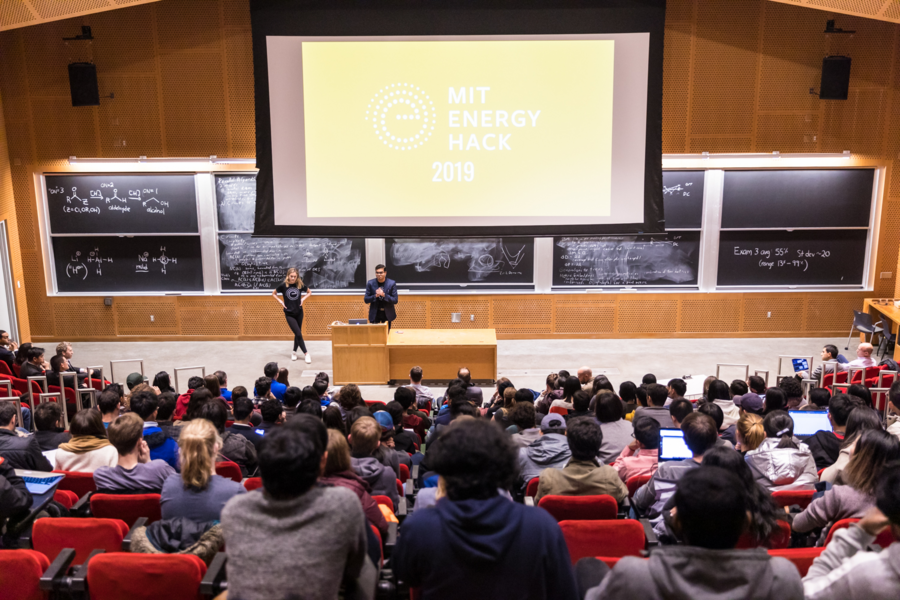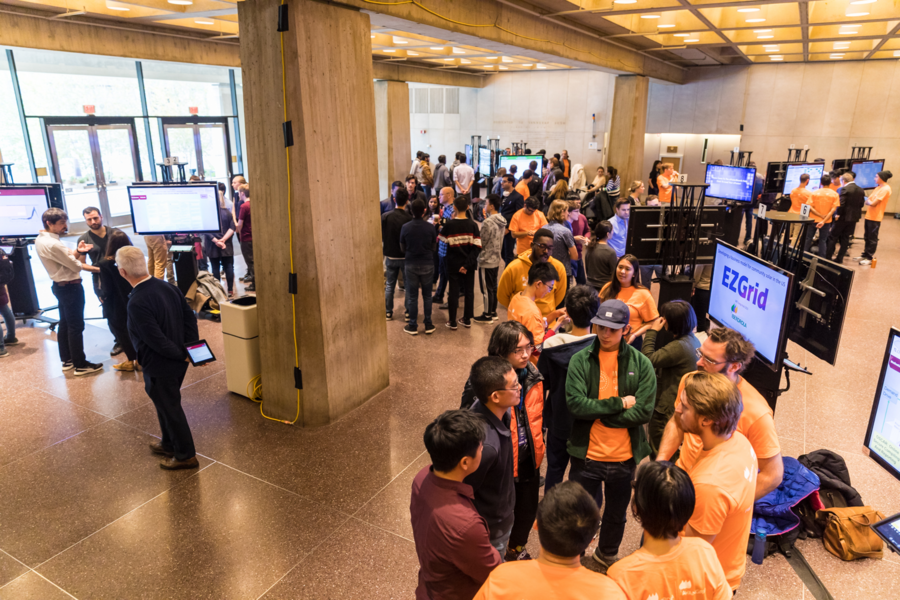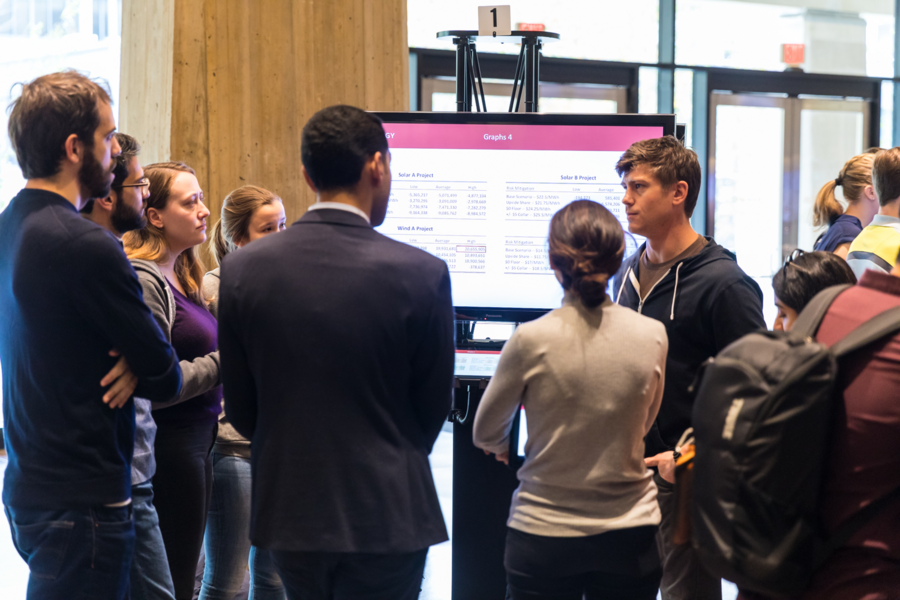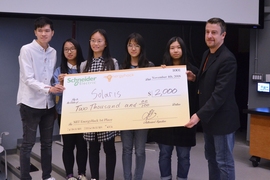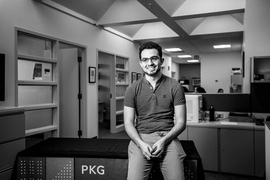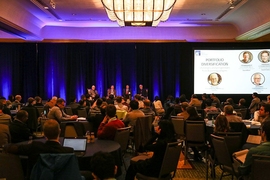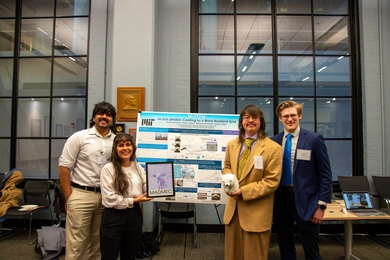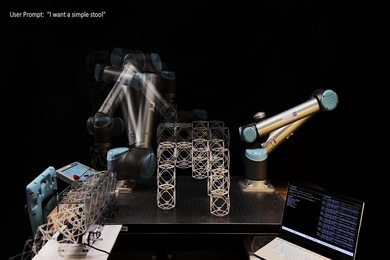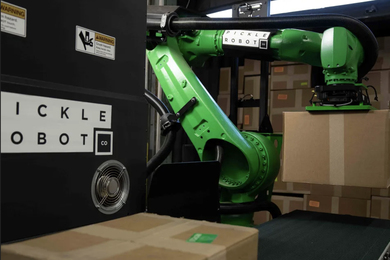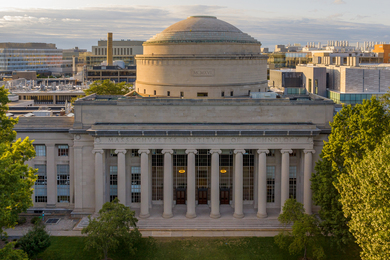During the third weekend in November, students from MIT and colleges across the globe convened on MIT’s campus to hack real-world challenges in the energy industry at the 2019 MIT EnergyHack. Hackers arrived at the Stata Center that Friday evening and had 36 hours to come up with a solution to the challenge they were assigned with their team members before presenting to company representatives, fellow hackers, and judges Sunday morning.
This year, MIT’s only energy-centric hackathon, hosted by the MIT Energy Club, focused on transitioning society toward its sustainability goals for a low-carbon energy landscape, with corporate sponsors exclusive to the areas of renewable energy, energy storage, and sustainable materials manufacturing.
Staying true to the theme, the leadership team, led by managing directors Supratim Das, a PhD and MBA dual-degree candidate in chemical engineering, and Jane Reed, a senior in physics and nuclear science and engineering, minimized waste by supplying hackers with reusable aluminum water bottles and bamboo utensil kits to decrease the use of plastic, and also communicated electronically instead of through printed materials.
“We wanted the participants to come away recognizing the importance of engaging in sustainable actions in day-to-day life while being an agent to propagate the message of sustainability and action on climate change to their home countries,” says Das.
Challenges were presented by Customer First Renewables, Iberdrola, Ionic Materials, NICE, Saint-Gobain, Toyota Research Institute, and The Energy Authority. Each challenge had a primary focus on finding ways to harness solar, wind, and energy-storage technologies to meet society’s growing energy demands worldwide.
While lithium-ion batteries were a primary topic for several challenges, each challenge offered different core problems to tackle. During his keynote Friday night, Patrick Herring, research scientist at Toyota Research Institute, emphasized the need for collaboration in the battery storage energy sector for a sustainable future — particularly with electric-vehicle batteries. This tied into the Toyota Research Institute’s challenge, which had hackers consider the full lifespan of batteries.
“The challenge that we presented for having some kind of second life for batteries grows out of a need that we see coming down the road, but we don’t really have a great solution — there’s not a great solution out there,” said Herring. “It’s good to start people thinking about it before it gets here.”
Thinking about the future was shared by many at the event, but not only regarding the future of energy on a global scale. “For us, it was a chance to meet a couple of hundred students and engineers in the world and learn about them and have them learn about us,” said Julia Di-Corleto, director of Saint-Gobain's research and development center in Massachusetts, when asked about what takeaways their company sought to gain from presenting a challenge in the hackathon.
The sentiments of collaborating with students beyond the EnergyHack was a common theme. “Something unique is to have the opportunity to really get in touch directly with the students and know what they want for the future, and share our project. I’m sure we're all listening to great ideas and maybe we can move forward [together],” said Roberto Mariscal, head of innovation at Iberdrola Spain. “The diversity of the people, it’s incredible. I have met people from all over the world in just half an hour, it’s fantastic. That’s something unique from MIT.”
One team for each challenge advanced from the preliminary poster presentation judging session to the final presentation round, where they pitched their solutions to a crowded auditorium with all the event’s attendees. Team Booth came in third, winning $1,000 for their solution to the Ionic Materials challenge; team Big Decentralized Energy came in second, winning $1,500 for their solution to the Iberdrola challenge; and team Synergy took first place, winning $2,000 for their solution to the Toyota Research Institute challenge. Solutions to the challenges can be viewed on the MIT EnergyHack website.
The turnout for the event, now in its fifth year, speaks to its own sustainability and the growing attraction to address energy issues. “It is indeed rare that you have over 150 students motivated about energy along with more than 10 corporate sponsors under the same roof, ready to listen to new ideas and make changes happen on a global scale,” says Das. “It is truly what MIT as a university stands for.”
